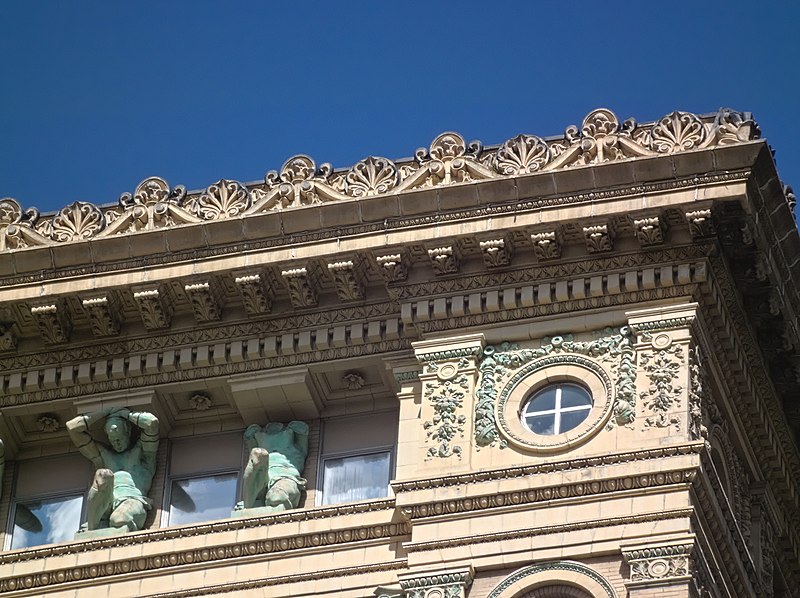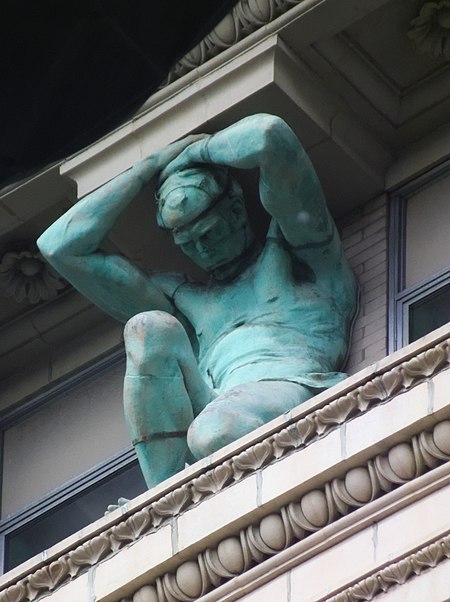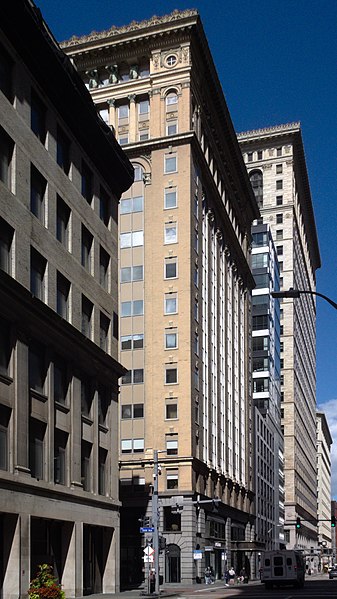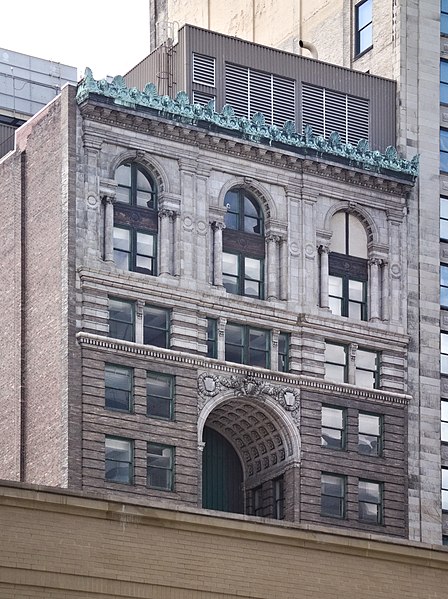
-
Elevator Door in the Koppers Building
-
House Building
-
Conestoga Building
-
Investment Building

Built in 1927, this Fourth Avenue tower was designed by John M. Donn, a Washington architect known for government buildings who seems not to have done anything else around here. (Update: This is incorrect; Donn also designed the Cathedral Mansions apartments in Shadyside.) The curious ornamental obelisks at the corners of the cap were the inspiration for Philip Johnson’s Tomb of the Unknown Bowler down the street.


-
Top of the Keystone Bank Building
-
U. S. Steel Tower
-
Top of the Frick Building, Tower of the Courthouse
-
Telamones and Other Ornaments on the Park Building

A “telamon” is a male human figure used as an architectural support. Most architectural references regard the term as interchangeable with “atlas” (of which the plural is “atlantes”), but some working architects seem to have distinguished the two, “telamones” being youthful, beardless figures, and “atlantes” being older bearded figures with pronounced or exaggerated musculature, like the atlantes on the Kaufmann’s clock. At any rate, the 1896 Park Building, which is our oldest standing skyscraper (if we don’t count the seven-storey Consetoga Building as a skyscraper), has thirty of these figures supporting the elaborate cornice. The sculptor seems not to be known, which is a pity, because these are exceptionally fine work. The architect was George B. Post, who also designed the New York Stock Exchange and the Wisconsin state capitol, among many other notable buildings.


One of these fellows has lost his head, which you might do, too, if you had to hold up a cornice like that for 126 years.



At some point in the middle twentieth century it seemed like a good idea to someone to fill in the shaft of the building with modernistic columns of windows. It was not a good idea.
-
BNY Mellon Center

Our second-tallest building opened in 1983 as One Mellon Center. It was actually meant to be the Dravo Building, but Dravo disappeared before the building was finished. There were plans to surround it with matching smaller buildings, but the 1980s boom went bust, and those buildings never happened.
The architects were Welton Becket and Associates—clearly the Associates in this case, since Mr. Becket himself died in 1969. (He is, however, credited with this and nearly three dozen other posthumous buildings in his Wikipedia article.)
-
Fifth Avenue Place Reflected in PPG Place







